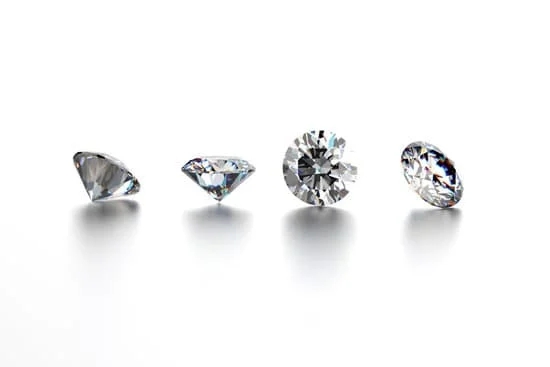Jewelry is a cherished possession for many individuals, but over time it can lose its shine and luster. One effective method of restoring jewelry’s brilliance is by using an ultrasonic cleaner. These devices use high-frequency sound waves to generate tiny bubbles that act on the surface of the jewelry, removing dirt, grime, and tarnish. But how long does it take to clean jewelry in an ultrasonic cleaner? Let’s explore this question further.
In this article, we will delve into the efficiency of ultrasonic cleaners for jewelry cleaning. We will discuss the advantages of using these cleaners, step-by-step guides for preparing jewelry for ultrasonic cleaning, and determining the appropriate cleaning time based on the type of jewelry and level of dirtiness. Additionally, we will explore factors that affect cleaning times in ultrasonic cleaners such as size, material composition, and complexity.
Cleaning your jewelry can be a daunting task, especially if you are unsure about the optimal cleaning time required for different types of jewelry. By understanding how long it takes to clean jewelry in an ultrasonic cleaner, you can achieve sparkling results every time. So let us begin our journey into unlocking the full potential of ultrasonic cleaners and discover how they can bring back the vibrant beauty of your favorite pieces.
Advantages of Using Ultrasonic Cleaners for Jewelry Cleaning
Ultrasonic cleaners offer numerous advantages when it comes to cleaning jewelry. Here are some of the key benefits that make ultrasonic cleaners a popular choice for many:
- Deep Cleaning: Ultrasonic cleaners use high-frequency sound waves to create tiny bubbles in the cleaning solution. These bubbles reach into every nook and cranny of the jewelry, including hard-to-reach areas like prongs and settings. As the bubbles collapse, they produce a scrubbing action that effectively removes dirt, grime, oil, and other contaminants from the surface of the jewelry.
- Time Efficiency: Unlike traditional hand-cleaning methods that can be time-consuming and require considerable effort, ultrasonic cleaners can clean multiple pieces of jewelry simultaneously in a matter of minutes. This makes them ideal for professional jewelers or anyone who wants to clean their precious pieces quickly and efficiently.
- Safe Cleaning: Ultrasonic cleaning is non-abrasive and does not involve any harsh chemicals or scrubbing that could potentially damage delicate jewelry. The gentle cleaning action of ultrasonic cleaners ensures that your valuable pieces remain undamaged during the cleaning process.
Using an ultrasonic cleaner for jewelry cleaning requires proper preparation to ensure optimal results. Here is a step-by-step guide on preparing your jewelry for ultrasonic cleaning:
- Step 1: Inspect Jewelry – Check for loose stones, cracks, or weak prongs before cleaning.
- Step 2: Choose Appropriate Cleaning Solution – Select a suitable cleaning solution based on the type of metal and gemstones in your jewelry. Some gems may require specialized solutions; consult a jeweler if you are unsure.
- Step 3: Set Up Ultrasonic Cleaner – Fill the tank with enough water to cover all the jewelry but ensure not to overfill it.
- Step 4: Place Jewelry in Basket or Tray – Arrange small items in a mesh basket or tray provided with the cleaner. Ensure that individual pieces do not touch each other.
- Step 5: Start the Cleaning Cycle – Close the lid of the cleaner and select the appropriate cleaning cycle for your jewelry. Follow the manufacturer’s instructions for time and intensity settings.
By following these steps and taking advantage of the benefits offered by ultrasonic cleaners, you can effectively and efficiently clean your precious jewelry while ensuring its longevity and luster.
Step-by-Step Guide on Preparing Jewelry for Ultrasonic Cleaning
Preparing your jewelry properly before placing it in an ultrasonic cleaner is essential to achieve optimal cleaning results. By following a step-by-step guide, you can ensure that your jewelry is ready for the ultrasonic cleaning process.
- Remove any loose debris: Before placing your jewelry in the ultrasonic cleaner, make sure to remove any loose dirt or debris that may be present. This can be done by using a soft-bristled brush or blowing gently on the jewelry. Pay close attention to crevices and hard-to-reach areas where dirt may accumulate.
- Inspect for loose stones: Carefully inspect your jewelry to ensure that all stones are secure. If you notice any loose stones, it is best to have them professionally tightened before placing the jewelry in the ultrasonic cleaner. The vibrations produced by the cleaner could potentially cause further damage if a stone is already loose.
- Check for fragile components: Some jewelry pieces may have delicate or fragile components that could be damaged by the ultrasonic cleaning process. Look for parts such as enamel, pearls, or opals that may not be suitable for ultrasonic cleaning. If you find any such components, it is advisable to clean them using alternative methods specifically designed for these materials.
By following these steps, you can effectively prepare your jewelry for cleaning in an ultrasonic cleaner, ensuring optimal results without causing any damage to your precious pieces.
| Preparing Jewelry for Ultrasonic Cleaning |
|---|
| 1. Remove any loose debris |
| 2. Inspect for loose stones |
| 3. Check for fragile components |
Determining the Appropriate Cleaning Time based on Jewelry Type and Level of Dirtiness
When using an ultrasonic cleaner to clean jewelry, it is important to determine the appropriate cleaning time based on the type of jewelry and its level of dirtiness. The cleaning time can vary depending on these factors, so it is essential to understand how to determine the ideal duration for effective cleaning.
Firstly, it is important to consider the type of jewelry being cleaned. Different types of metals and gemstones require different cleaning times. For example, delicate gemstones such as pearls or opals may require a shorter cleaning time compared to more durable gemstones like diamonds or sapphires. Similarly, gold or silver jewelry may have different cleaning times depending on their purity and alloy composition.
Secondly, the level of dirtiness also plays a crucial role in determining the appropriate cleaning time. Lightly soiled jewelry may require a shorter cleaning time compared to heavily tarnished or greasy pieces. It is recommended to start with a shorter duration and gradually increase it if necessary, keeping in mind that prolonged exposure to ultrasonic waves can potentially damage certain types of jewelry.
To help determine the appropriate cleaning time for your specific piece of jewelry, you can refer to manufacturer guidelines or consult with a jeweler. Additionally, conducting some research online or contacting the jewelry manufacturer directly can provide valuable insights into recommended cleaning times for specific materials and designs.
Overall, determining the appropriate cleaning time based on jewelry type and level of dirtiness requires careful consideration and understanding. By taking these factors into account, you can ensure that your jewelry is effectively cleaned without any potential damage.
Factors Affecting the Cleaning Time in Ultrasonic Cleaners
Ultrasonic cleaners are highly efficient machines for cleaning jewelry, but the cleaning time can vary depending on several factors. Understanding these factors is crucial to achieve optimal results and prevent any damage to your precious pieces. The three main factors that affect the cleaning time in ultrasonic cleaners are size, material, and complexity.
Size plays a significant role in determining the cleaning time in ultrasonic cleaners. Larger pieces of jewelry such as necklaces or bracelets may require more time in the cleaner compared to smaller items like earrings or rings. This is because larger pieces have more surface area to clean and may contain intricate details or crevices that need extra attention.
The material of the jewelry also impacts the cleaning time in ultrasonic cleaners. Different materials have varying levels of durability and sensitivity to ultrasonic waves. For example, metals like gold and silver are generally safe for ultrasonic cleaning and can withstand longer durations in the cleaner. On the other hand, delicate gemstones like opals or pearls require shorter cleaning times as they are more vulnerable to damage from high-intensity vibrations.
Finally, the complexity of the jewelry design affects the cleaning time as well. Jewelry with intricate designs, settings, or prongs will require more time for thorough cleaning. These complex pieces often have hidden crevices where dirt and debris can accumulate, requiring additional exposure to ultrasound waves for effective cleaning.
Understanding these factors will help you determine the appropriate cleaning time for your jewelry in an ultrasonic cleaner. It is important to follow manufacturer guidelines when setting the timer on your cleaner based on these factors. By doing so, you can effectively clean your jewelry while minimizing any risk of damage caused by excessive exposure to ultrasound waves.
| Factors | Affects on Cleaning Time |
|---|---|
| Size | Larger pieces may require more time for thorough cleaning due to their increased surface area and intricate details. |
| Material | Different materials have varying levels of durability and sensitivity to ultrasonic waves. Delicate gemstones may require shorter cleaning times compared to metals like gold or silver. |
| Complexity | Jewelry with intricate designs, settings, or prongs will require more time for thorough cleaning as they often have hidden crevices where dirt can accumulate. |
Tips for Maximizing Cleaning Efficiency in Ultrasonic Cleaners
Cleaning jewelry in an ultrasonic cleaner can be a highly effective and efficient method to remove dirt, grime, and tarnish. However, to ensure optimal cleaning results and protect your precious pieces, it is important to follow certain dos and don’ts when using these machines. Here are some tips for maximizing the cleaning efficiency in ultrasonic cleaners:
Dos
1. Use the right cleaning solution: It is crucial to use a suitable cleaning solution that is specifically formulated for use in ultrasonic cleaners. These solutions are designed to enhance the machine’s cleaning power without causing any damage to the jewelry. Always follow the manufacturer’s instructions when preparing the cleaning solution.
2. Place jewelry in a mesh basket: To prevent jewelry from coming into direct contact with the bottom of the tank or other pieces of jewelry, it is recommended to place them in a mesh basket or tray. This ensures that they are evenly exposed to the ultrasonic waves and allows for more effective cleaning.
3. Follow time recommendations: Different types of jewelry may require different amounts of cleaning time. Follow the manufacturer’s recommendations or guidelines provided by experts to determine an appropriate cleaning time for your specific pieces. Be cautious not to exceed the recommended time as it could potentially damage delicate items.
Don’ts
1. Do not overcrowd the tank: While it may be tempting to clean multiple pieces of jewelry at once, it is important not to overcrowd the tank. Overcrowding can hinder the effectiveness of ultrasonic waves reaching all surfaces of the jewelry properly, leading to incomplete cleaning results.
2. Avoid using harsh chemicals: Refrain from using harsh chemicals such as bleach or ammonia in ultrasonic cleaners as they can cause damage or discoloration to certain types of jewelry, especially gemstones or delicate metals. Stick to gentle, jewelry-specific cleaning solutions to ensure the safety and longevity of your pieces.
3. Avoid leaving jewelry in the cleaner for too long: It is essential to remove the jewelry from the ultrasonic cleaner as soon as the recommended cleaning time has elapsed. Leaving them in the machine for longer than necessary can lead to overexposure to ultrasonic waves, potentially causing damage.
By following these tips, you can ensure that your jewelry receives maximum cleaning efficiency in an ultrasonic cleaner while minimizing the risk of any damage or negative effects. Remember to always read and follow the manufacturer’s instructions and guidelines provided for your specific ultrasonic cleaner model.
Common Mistakes to Avoid when Cleaning Jewelry in Ultrasonic Cleaners
When using an ultrasonic cleaner to clean jewelry, there are a few common mistakes that should be avoided in order to prevent damage and achieve optimal cleaning results.
Using Incorrect Cleaning Solutions
One of the most common mistakes when cleaning jewelry in an ultrasonic cleaner is using incorrect cleaning solutions. It is important to use a cleaning solution specifically designed for use in ultrasonic cleaners and appropriate for the type of jewelry being cleaned. Using harsh or abrasive chemicals can damage the jewelry and erode precious metals or gemstones.
It is recommended to use a mild, non-toxic cleaning solution that is safe for all types of jewelry. Additionally, ensure that the cleaning solution is properly diluted according to manufacturer’s instructions.
Overloading the Ultrasonic Cleaner
Another mistake often made when using an ultrasonic cleaner is overloading it with too many pieces of jewelry at once. The ultrasonic waves need space to effectively penetrate and clean each individual piece. Overcrowding the cleaner can result in uneven cleaning and may cause damage as the pieces knock against each other. To avoid this mistake, it is advisable to clean only a few pieces at a time, allowing for proper circulation of the cleaning solution around each piece.
Not following Manufacturer’s Instructions
It is crucial to read and follow the manufacturer’s instructions when using an ultrasonic cleaner. Each machine may have specific guidelines regarding temperature settings, duration of cleaning cycles, and maximum capacity. Failure to adhere to these instructions can lead to ineffective cleaning or even damage to the jewelry or the machine itself. Take the time to familiarize yourself with the operating instructions provided by the manufacturer before beginning the cleaning process.
Maintenance and Care for Ultrasonic Cleaners
Maintaining and caring for your ultrasonic cleaner is crucial to ensuring its longevity and optimal performance. Regular maintenance and proper care will not only extend the lifespan of your machine but also guarantee that it continues to deliver excellent cleaning results for your jewelry. Here are some essential tips and guidelines to follow:
- Cleaning the Tank: Regularly clean the tank of your ultrasonic cleaner to remove any residue or buildup from previous cleaning cycles. Empty the tank after each use, rinse it with clean water, and wipe it dry. Avoid using abrasive cleaners or scrub brushes as they can damage the tank.
- Checking the Solution: The cleaning solution used in an ultrasonic cleaner can become dirty or lose its effectiveness over time. It is important to regularly check and replace the solution when necessary. Follow the manufacturer’s instructions on how often to change the solution.
- Inspecting and Maintaining Equipment: Check all components of your ultrasonic cleaner, such as the transducer, generator, and heating element, for any signs of wear or damage. If you notice any issues, contact a professional technician for repair or replacement.
- Storing Properly: When not in use, store your ultrasonic cleaner in a cool, dry place away from direct sunlight or extreme temperatures. Ensure that it is kept in a secure location where it won’t be knocked over or damaged.
- Safety Precautions: Always follow safety guidelines provided by the manufacturer when operating your ultrasonic cleaner. Avoid placing your hands directly into the tank during operation and use appropriate protective gear if required.
By following these maintenance and care practices, you can significantly prolong the life of your ultrasonic cleaner while maintaining its optimal performance for jewelry cleaning tasks.
Tips for Maximizing Cleaning Efficiency in Ultrasonic Cleaners: Dos and Don’ts
To get the most out of your ultrasonic cleaner and achieve maximum cleaning efficiency for your jewelry items, here are some dos and don’ts to keep in mind:
Dos:
- Read the Instruction Manual: Familiarize yourself with the user manual of your ultrasonic cleaner to understand its specific features, settings, and recommended cleaning techniques.
- Properly Prepare Jewelry for Cleaning: Follow the step-by-step guide on preparing jewelry items for ultrasonic cleaning outlined in a previous section. This will ensure that the cleaning process is effective and safe for your precious pieces.
- Use Recommended Cleaning Solutions: Choose a high-quality jewelry cleaning solution specifically formulated for use in ultrasonic cleaners. These solutions are designed to enhance the cleaning process while being gentle on delicate gemstones or metals.
- Set Appropriate Cleaning Time: Determine the appropriate cleaning time based on the jewelry type and level of dirtiness using the guidelines provided earlier in this article. Avoid over-cleaning as it may lead to unnecessary wear or damage to your jewelry items.
Don’ts:
- Use Harsh Chemicals: Avoid using harsh chemicals such as bleach or abrasive compounds in your ultrasonic cleaner as they can cause damage to both your machine and jewelry items.
- Mix Cleaning Solutions: Do not mix different cleaning solutions or additives unless recommended by the manufacturer. Improper mixing can lead to ineffective cleaning or damage to your jewelry.
- Overload the Tank: Do not overcrowd the tank with too many jewelry pieces at once, as this may reduce the efficiency of the ultrasonic waves reaching each item properly. Clean smaller batches of jewelry for better results.
- Neglect Regular Maintenance: Remember to perform regular maintenance tasks as discussed in the previous section to keep your ultrasonic cleaner in optimal condition. Ignoring maintenance can result in reduced performance or even breakdown of your machine over time.
By following these dos and don’ts, you can maximize efficiency and ensure safe use of your ultrasonic cleaner, providing you with consistently sparkling results when cleaning your precious jewelry.
Comparing Ultrasonic Cleaning Times with Other Cleaning Methods
Comparison with Manual Cleaning
Ultrasonic cleaners have gained popularity among jewelry enthusiasts and professionals due to their efficiency and convenience. One key aspect that sets ultrasonic cleaning apart from manual cleaning methods is the time it takes to clean jewelry. When compared to manual cleaning, which involves the use of a brush and cleaning solution, ultrasonic cleaners can significantly reduce the cleaning time.
Manual cleaning requires the repetitive motion of scrubbing each piece of jewelry individually, which can be a time-consuming process. With an ultrasonic cleaner, multiple pieces of jewelry can be cleaned simultaneously in a single cleaning cycle. This not only saves time but also ensures uniform cleanliness across all items.
Comparison with Chemical Cleaning
Another commonly used method for jewelry cleaning is chemical cleaning. This method involves immersing the jewelry in a chemical solution for a specified amount of time. Compared to chemical cleaning, ultrasonic cleaners can provide more efficient results in a shorter span of time.
Chemical cleaning often requires several minutes or even hours of soaking before achieving desired results. In contrast, ultrasonic cleaners use high-frequency sound waves to create cavitation bubbles that thoroughly clean the jewelry within minutes. This makes ultrasonic cleaners an attractive option for those looking for quick and effective jewelry cleaning solutions.
Comparison with Professional Jewelry Cleaning Services
While professional jewelry cleaning services offer expert care and specialized equipment, they are generally more time-consuming compared to using an ultrasonic cleaner at home. Taking your jewelry to a professional cleaner means waiting for them to process your request, transporting your items, and waiting for them to be returned.
With an ultrasonic cleaner, you have the advantage of immediate access and control over the entire process. You can clean your jewelry whenever it suits you best without being dependent on external factors or schedules. Additionally, by investing in your own ultrasonic cleaner, you have a long-term solution that saves you time and money in the long run.
Understanding the Importance of Post-Cleaning Steps to Restore Jewelry’s Luster
After cleaning jewelry in an ultrasonic cleaner, it is crucial to perform post-cleaning steps to restore its luster and ensure a polished finish. These steps are essential for removing any residue left behind by the cleaning process and bringing out the brilliance of the jewelry. By following these post-cleaning steps, you can achieve sparkling results that truly showcase the beauty of your jewelry.
Rinsing with Clean Water
One of the first post-cleaning steps is to thoroughly rinse your jewelry with clean water. This helps remove any remaining cleaning solution or loosened dirt particles that may be clinging to the surface of the jewelry. It is best to use room temperature or lukewarm water for rinsing, as excessive heat or cold can be damaging to certain types of gemstones or metals.
Ensure that you rinse each piece of jewelry individually, and pay attention to hard-to-reach areas such as behind prongs or clasps. You can use a gentle stream of water from a faucet or place jewelry in a shallow bowl filled with water and gently agitate it to dislodge any residual dirt.
Drying Your Jewelry
Once your jewelry has been rinsed, it is important to dry it thoroughly before wearing or storing it. Moisture left on the surface of the jewelry can lead to tarnishing or even damage over time. To dry your jewelry, pat it gently with a soft, lint-free cloth until it is completely dry. Avoid using tissues or paper towels, as these materials can leave behind fibers that could scratch the surface.
For intricate pieces with crevices and hard-to-reach areas, consider using compressed air or a hairdryer set on low heat for a gentle blast of air. Make sure not to hold the hairdryer too close to prevent any potential heat damage.
Inspecting and Polishing
After your jewelry has been cleaned and dried, take the time to inspect it closely. Look for any remaining dirt or residue that may have been missed during the cleaning process. You can use a magnifying glass or a jewelry loupe to examine your pieces more closely.
If you notice any stubborn grime or tarnish, you may need to give your jewelry an additional polish. Use a jewelry polishing cloth specifically designed for the type of metal used in your piece. Gently buff the surface in a back-and-forth motion until the desired shine is achieved.
By following these post-cleaning steps, you can ensure that your jewelry not only looks clean but also retains its natural luster and brilliance. Taking care of your jewelry after cleaning it in an ultrasonic cleaner will help maintain its overall condition and longevity.
Conclusion
In conclusion, using ultrasonic cleaners to clean your jewelry is an efficient and effective way to achieve sparkling results. By following the step-by-step guide and determining the appropriate cleaning time based on the type of jewelry and level of dirtiness, you can ensure that your favorite pieces are thoroughly cleaned without causing any damage.
One of the key factors to consider when using an ultrasonic cleaner is the size, material, and complexity of the jewelry. These factors can greatly affect the cleaning time required. It is important to take these into account in order to avoid over-cleaning or under-cleaning your jewelry.
To maximize cleaning efficiency in ultrasonic cleaners, there are some dos and don’ts to keep in mind. Do make sure to use a suitable cleaning solution and follow manufacturer’s instructions. Don’t forget to remove any delicate or fragile stones before placing the jewelry in the cleaner. This will help prevent any unnecessary damage.
Lastly, it is essential to understand the importance of post-cleaning steps to restore your jewelry’s luster. After cleaning, make sure to rinse your jewelry thoroughly with clean water and dry it properly before wearing or storing it. This will help maintain its shine and prolong its longevity.
In comparison with other cleaning methods, ultrasonic cleaners have proven to be highly efficient in removing dirt and grime from jewelry. Their ability to reach into small crevices and clean hard-to-reach areas sets them apart from traditional methods such as soaking or scrubbing.
With proper maintenance and care for your ultrasonic cleaner, you can ensure its longevity and optimal performance. Regularly clean the tank, change the solution, and handle it with care according to the manufacturer’s instructions. This will help prolong its lifespan and continue delivering powerful cleaning results.
Frequently Asked Questions
Do you rinse jewelry after ultrasonic cleaner?
It is generally recommended to rinse jewelry after using an ultrasonic cleaner. While the ultrasonic cleaner effectively removes dirt, grime, and other contaminants from the jewelry, it is important to rinse off any remaining cleaning solution or residue that may be present after the cleaning process.
Rinsing the jewelry ensures that no cleaning chemicals are left on the surface, preventing potential damage or reactions with the skin when worn.
How long is too long in an ultrasonic cleaner?
The duration of time spent in an ultrasonic cleaner depends on various factors, including the type of jewelry being cleaned and the level of dirt or grime present. Typically, it is advised not to exceed 10 to 15 minutes in an ultrasonic cleaner as prolonged exposure may lead to potential damage.
However, certain delicate or sensitive pieces of jewelry may require shorter cleaning times to prevent any harm. It is always necessary to check the manufacturer’s guidelines for specific instructions regarding the appropriate amount of time for different types of jewelry.
What is the best frequency for jewelry cleaning?
The best frequency for jewelry cleaning in an ultrasonic cleaner depends on various factors such as the material composition and type of jewelry being cleaned. Generally, frequencies between 40 kHz and 45 kHz are considered suitable for most common types of jewelry cleaning.
This frequency range offers a good balance between efficient cleaning and minimizing potential damage or stress caused by cavitation (bubbles forming and collapsing) within the cleaning solution. It is important to adhere to manufacturer recommendations or seek professional advice if unsure about which frequency setting is ideal for a specific piece of jewelry, particularly when dealing with more delicate or valuable items.

Welcome to my jewelry blog! My name is Sarah and I am the owner of this blog.
I love making jewelry and sharing my creations with others.
So whether you’re someone who loves wearing jewelry yourself or simply enjoys learning about it, be sure to check out my blog for insightful posts on everything related to this exciting topic!





